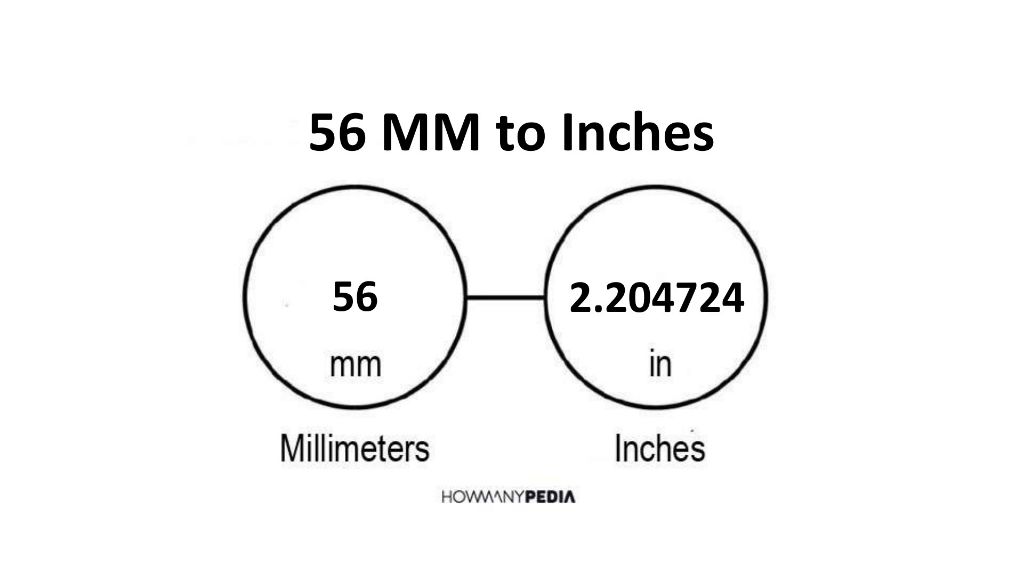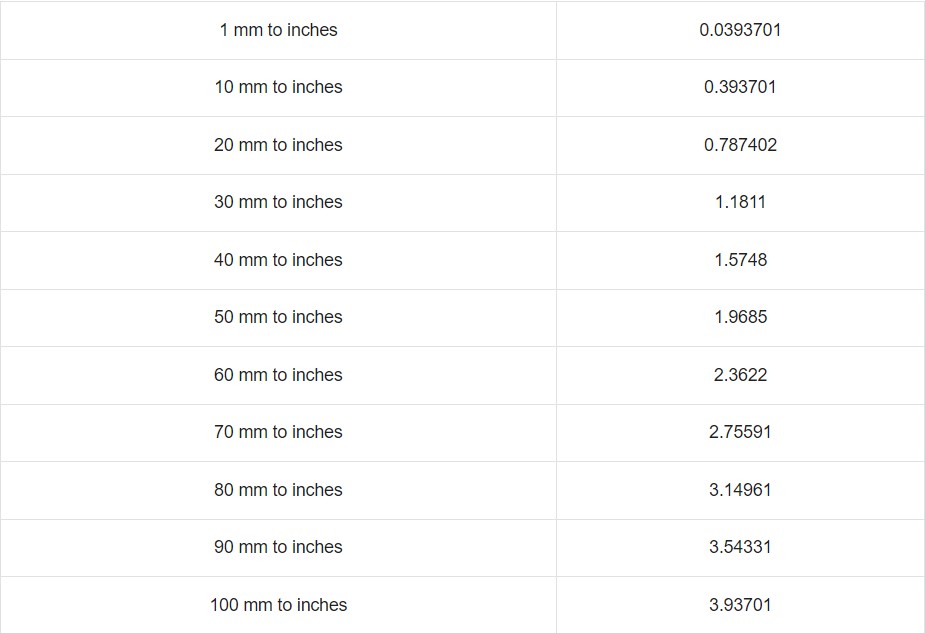Convert 5.56 Mm To Inches: Easy Calculation & Guide
Is precision in measurement a universally understood concept? The accurate conversion of millimeters to inches is crucial across diverse fields, from engineering and manufacturing to everyday tasks, highlighting the importance of precision in our world.
The question of "How many inches is 5.56 millimeters?" may seem simple at first glance. However, understanding the intricacies of this conversion unveils a fascinating interplay of units, formulas, and practical applications. Let's dive into this conversion and uncover the principles behind it. The core principle is straightforward: to convert millimeters to inches, one must use a conversion factor that bridges the gap between these two units of length. The official conversion rate is, one inch is equivalent to 25.4 millimeters.
| Metric Unit | Imperial Equivalent | Calculation |
|---|---|---|
| 1 Millimeter (mm) | 0.0393701 Inches (in) | 1 mm = (1/25.4) in 0.03937 in |
| 5.56 Millimeters (mm) | 0.21889763 Inches (in) | 5.56 mm / 25.4 = 0.21889763 in |
| 10 Millimeters (mm) | 0.393701 Inches (in) | 10 mm / 25.4 = 0.393701 in |
| 20 Millimeters (mm) | 0.787402 Inches (in) | 20 mm / 25.4 = 0.787402 in |
| 30 Millimeters (mm) | 1.181102 Inches (in) | 30 mm / 25.4 = 1.181102 in |
| 50 Millimeters (mm) | 1.968504 Inches (in) | 50 mm / 25.4 = 1.968504 in |
| 100 Millimeters (mm) | 3.937008 Inches (in) | 100 mm / 25.4 = 3.937008 in |
| 500 Millimeters (mm) | 19.685039 Inches (in) | 500 mm / 25.4 = 19.685039 in |
To convert 5.56 millimeters to inches, we employ this conversion factor. The calculation involves dividing the millimeter value by 25.4. Therefore, 5.56 mm / 25.4 equals approximately 0.21889763 inches. In essence, 5.56 millimeters is roughly equivalent to 0.219 inches when rounded to three decimal places.
This conversion is a practical demonstration of how different units relate to each other. The SI base unit for length is the meter, with the millimeter being a subunit. One meter is equal to 1000 millimeters or approximately 39.37 inches. The inch, on the other hand, is a unit of length within the imperial and US customary systems, with one inch being exactly 2.54 centimeters. As such, there are 12 inches in a foot and 36 inches in a yard. The relationship between these seemingly different measurements shows how interconnected our measurement systems can be.
The conversion of millimeters to inches isnt just a math exercise; it is fundamental to several engineering and design scenarios. For example, in the world of firearms, the 5.56 NATO cartridge provides a tangible illustration of these principles. The 5.56 NATO cartridge has a specific diameter, often described in millimeters or inches. The land diameter for a 5.56 NATO cut barrel is .219 inches, while the bullet diameter is .224 inches, resulting in an interference fit of 0.005 inches. When converting the barrel's diameter, 5.56mm to inches, you arrive at a value of approximately 0.2188, which rounds up to the standard .219 inches across the lands as found in the specifications. This precision demonstrates how crucial accurate conversions are for ensuring the components function safely and effectively.
Converting 56.5 millimeters to inches highlights the consistent application of the conversion formula. Using the conversion factor, we calculate the result. The formula is simple: Value in inches = value in mm * 0.0393701. Following this, we can find the value in inches by multiplying 56.5 mm by 0.0393701, which equals 2.22441 inches. The formula is correct because one inch equals 25.4 mm.
Another context where this type of conversion is crucial is in manufacturing. Many tools and machines operate on measurements, whether it is the design of a mechanical part or the fabrication of an electronic component. Understanding how to convert units accurately is a fundamental skill for anyone working in production, ensuring that products meet precise specifications and perform according to design.
Considering the many different units of measurement used throughout history, it is easy to imagine the confusion that may have existed. But standardization has come to help. The metric system, also known as the International System of Units (SI), is the most widely used system globally. It has facilitated communication and collaboration across various scientific and technological domains. Converting millimeters to inches becomes much more than mere numbers; it demonstrates how measurement systems can connect different methods of operation.
The conversion of units also relates to everyday life. For example, when a person buys a piece of furniture or appliances. Measurements are expressed in inches. The ability to convert these measurements to millimeters allows a consumer to understand the items dimensions, and to accurately assess whether the product fits into a room or space. This ensures that everything fits, whether it's a new television, a refrigerator, or a couch.
In summary, converting from millimeters to inches is not merely a matter of mathematical formula; it reflects a fundamental concept of our world. It is a testament to precision, the importance of consistent measurements, and the interconnectedness of various systems. The ability to convert these units accurately is a critical skill in numerous fields, ranging from manufacturing and engineering to everyday consumer decisions.
To perform the conversion, the basic formula can be used:Value in inches = Value in millimeters / 25.4
Here are a few more examples of common conversions:
- 1 mm = 0.03937 inches
- 10 mm = 0.3937 inches
- 20 mm = 0.7874 inches
- 30 mm = 1.1811 inches
- 40 mm = 1.5748 inches
- 50 mm = 1.9685 inches
- 100 mm = 3.93701 inches
- 200 mm = 7.87402 inches
- 500 mm = 19.685039 inches
The accuracy of these conversions is crucial, and it is essential to note that one millimeter is approximately 0.03937 inches and one inch equals 25.4 millimeters. The question, is 20 mm the same as 1 inch? The answer is no. 20 mm is about 0.7874 inches, while one inch equals 25.4 mm. If you were to ask what is the size of 500 mm in inches, the answer is 19.685039 inches. The 5.56 NATO cartridge is a rimless bottlenecked cartridge, with a diameter of 5.56 mm (0.219 inches) and a case length of 44.7 mm (1.76 inches). It has a maximum overall length of 57.4 mm (2.26 inches) and a maximum case capacity of 1.85 grams.
In essence, understanding the relationship between units is a key to both theoretical understanding and practical application. Whether it is building a machine, designing a product, or understanding the specifications of a cartridge, knowing how to convert units from millimeters to inches is a critical skill that bridges the gap between technical language and real-world applications.


